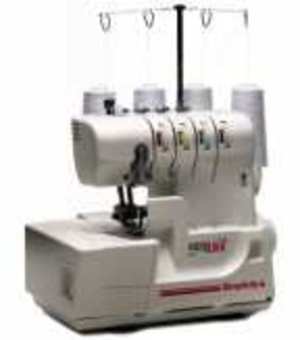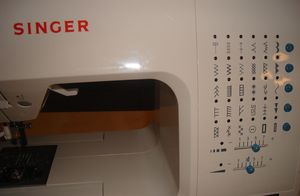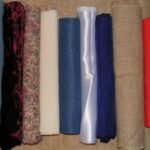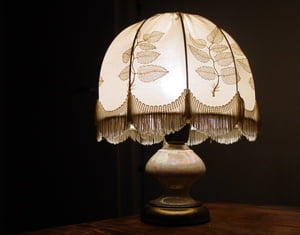No arguments here, a sewing machine can be one of the most useful tools in a home; sewing machines can also be one of the most difficult tools to learn how to use or feel confident with. If you’re one of the millions of people throughout recent history that have conquered the queasy, lost feeling when you approach a sewing machine, congratulations! It no doubt involved learning how to load a bobbin and how not to put the needle in the machine backwards (been there, done that – as has every other sewer I know). If you’ve come this far already and use your sewing machine to create things, you are ready for the next step: The Serger.
Wait, come back! It isn’t even out of the box yet, and you’re running for the door? Take a deep breath and tell yourself that humans built machines, not vice versa; and that it stands to reason that you can figure out how to use a serger if you are just willing to try. I have two good bits of news for you, to help lure you back into the room: sergers don’t have bobbins, and it is a LOT harder to sew through your finger with one. I would have said “impossible” but . . . well anyway.
Sergers, also called overlock machines, are not intended to replace your regular sewing machine – which has a boggling number of uses. No, sergers should be a wildly welcomed addition to your family of sewing tools, as they save you time and really polish up the look of your finished products. How? Imagine for a moment that you could sew a straight line (or two), cut your excess seam allowance off in a perfectly straight line, and find a way to sew an overlocking stitch (or two) that kept your fabric from fraying – all at the same time? How many machines and hands and needles would you imagine you’d need, if you didn’t have a handy dandy serger to do it for you!
Overlock machines and sergers have an almost laughable ability to strike fear and intimidation into the hearts of crafters: two needles, a machinated razor-sharp knife, and anywhere from two to five cones of thread?? I’ll admit, it does sound a little like a death trap – but it isn’t. I write from experience: the serger that I bought sat in its box, unopened for weeks. I made a breakthrough and actually took it out of the box, and after about a half hour of poking it with a stick and grunting a bit like a cross between a cavewoman and Scooby Doo, I let it rest in peace on the sewing table.
It took me nearly a month to finally sit down and watch the quick and helpful video that came with it which explained threading techniques, thread tension settings, and stitch options. No kidding – within 20 minutes of starting that video, I was zipping through my 17-yard awning project. If I hadn’t gotten a grip on myself that day, I would still be finishing the seams on that thing, and not enjoying the money I already have in hand for completing it.
Newer machine models have enhanced usability features, such as color-coordinated thread tension settings and thread guides. These useful tools are also less expensive than they’ve ever been, and there are more brands to choose from as well. I’ve included a great resource, Allbrands.com, to get you started on your search for a serger that fits your needs. If you don’t love serging within an hour of getting yours threaded, I want to know about it!
Reference:
- www.allbrands.com – A great resource for a wide variety of sewing tools and accessories







